
 |
Repairing
the Church Tower 2007
|
St Catherine's Church is a wonderful old building, but as you might expect, it does need a few repairs from time to time. It was built in the 14th Century, and each generation of Ludham residents has done their bit to keep it standing. It is inconceivable that the current generation is going to let it fall down.
So, over the last 5 years, a quarter of a million pounds has had to be spent on the church. A massive burden on a village of just 1300 inhabitants. this could not have been done without the support of grants from English Heritage and a massive fund raising effort by local people.
That's not the end of it either. The work is far from complete, but we are getting there. This is the story of the latest phase of the work which concentrated on the tower and on the side windows. There are some great photographs and some interesting stories to go with them. we hope you enjoy them.

It is the summer of 2007.
The tower is covered in £20,000 of scaffolding and
the side windows are boarded up. Work is underway.
 The church is built from flints held together with lime mortar. The picture above shows what happens if you pull on a loose bit. Half the buttress collapses. To the right, you see the same buttress after being rebuilt. |
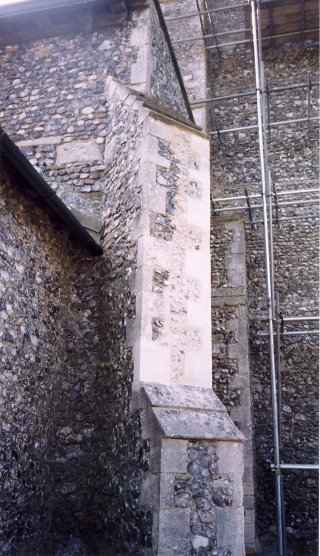 |
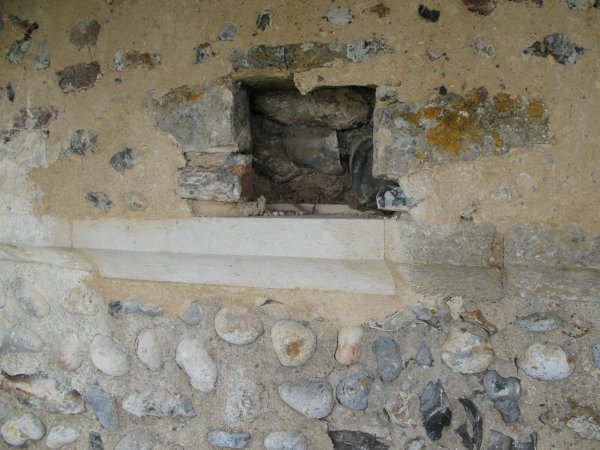
In some places, new stone
was needed. While this one was being fitted to the
string course, a hole appeared in the stone work. These
loosely filled holes were left by the builders of the
tower. It was where their wooden scaffolding was fitted.
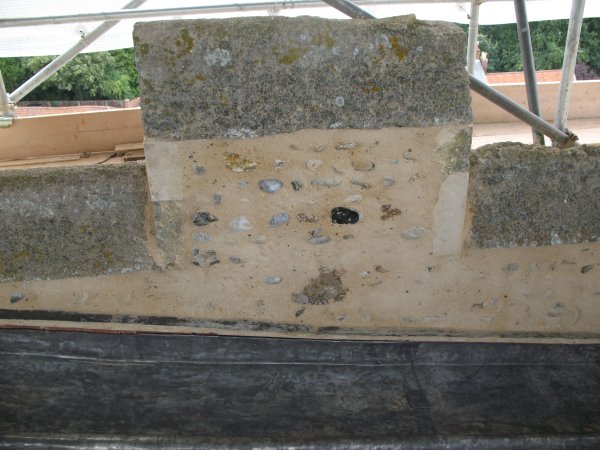
The battlements at the top
of the tower are ornamental, but they still needed
extensive pointing and some new stone work fitting.
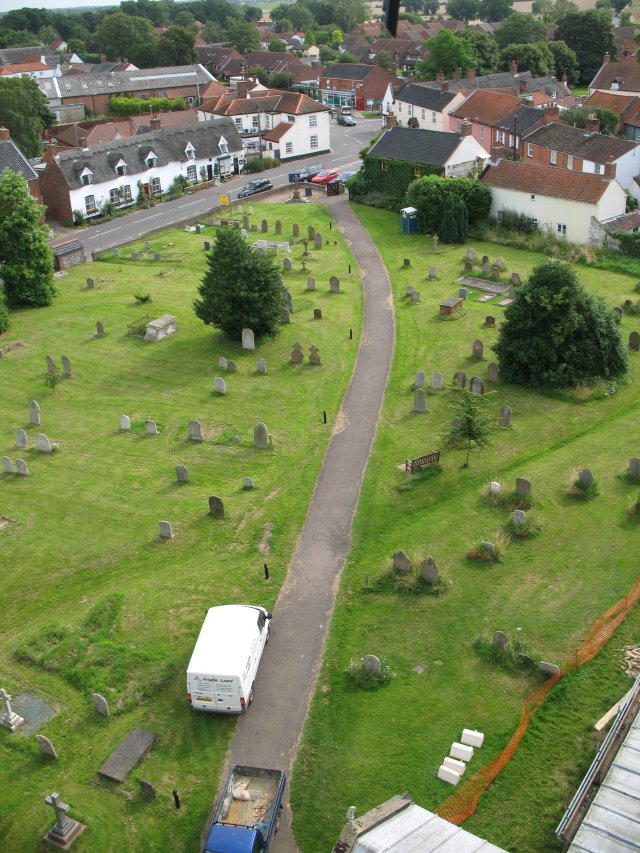
The view from the tower is stunning
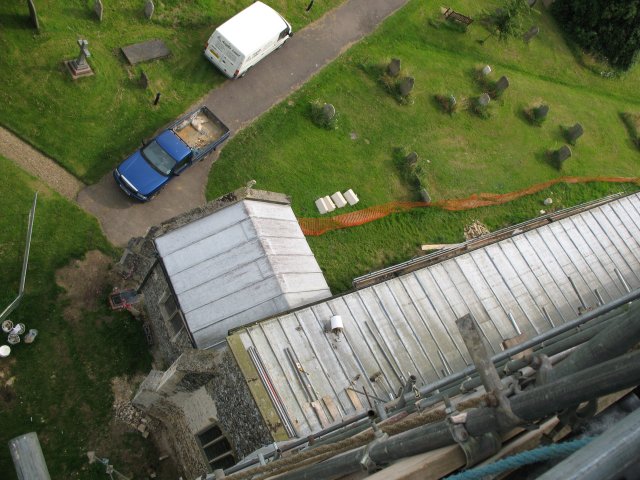
It's high too. Don't look down.
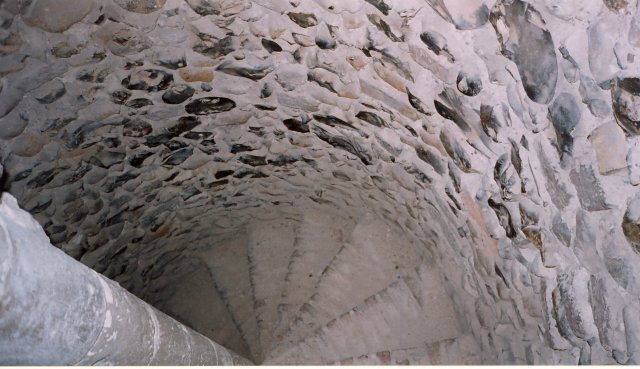

The view from the tower is stunning

It's high too. Don't look down.

The spiral staircase
inside the tower is not often seen. It was too
dangerous for visitors in the past. Now it even has
it's own lights.


One of the reasons
that the tower was in such poor shape was water
running down it. Now it has these extra long
spouts to throw the water clear. the ground at
the bottom has been contoured so that water now
runs away from the building. It might, at last,
start to dry out.
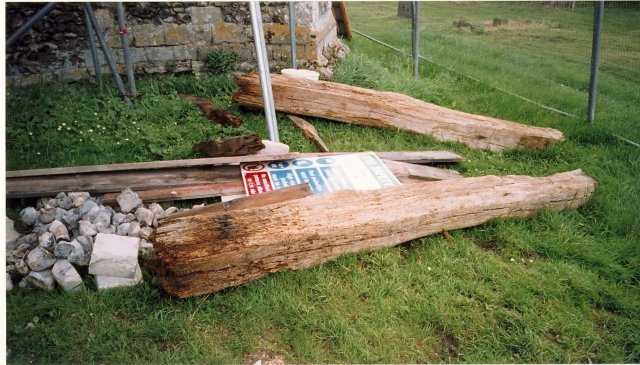

These two
chunks of wood were in fact one oak beam
which has rotted through in the middle. The
break was immediately below the flag pole
and had seriously weakened the structure of
the roof. A dendro chronology test was done
on the beam to see how old it was. The test
was compulsory as part of the work on this
old building. It cost £500 and did not
produce any date.
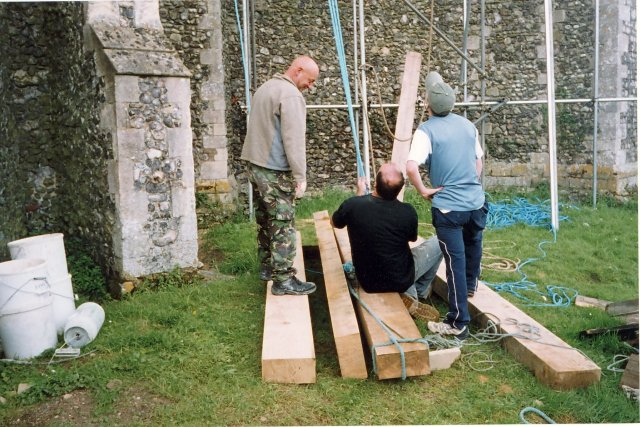

So, these
new beams had to be lifted up onto the
roof. They are heavy chunks of oak, so
how do you get them up there?
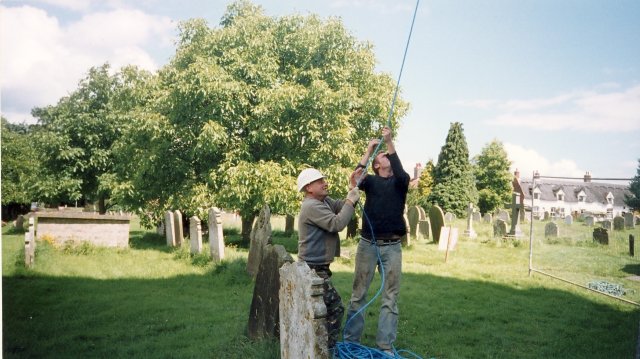

This is
how it was done. Probably the same
way that it was done when the tower
was built.
| The beam is hoisted
up to the top of the tower
ready for insertion under
the roof structure and flag
pole. the new beam is made
up in four parts bolted
together. |
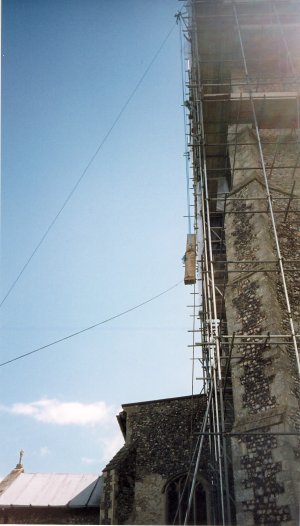 |
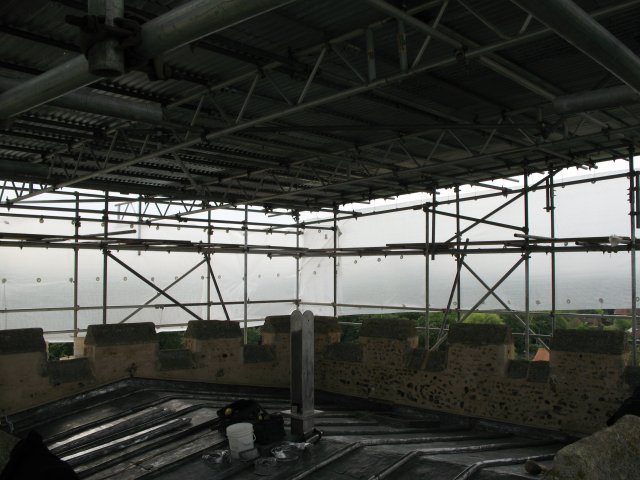
A temporary roof was fitted
over the tower while the work was carried out. Here you
see the new stainless steel support for the flagpole
which is bolted through the roof onto the new beam.
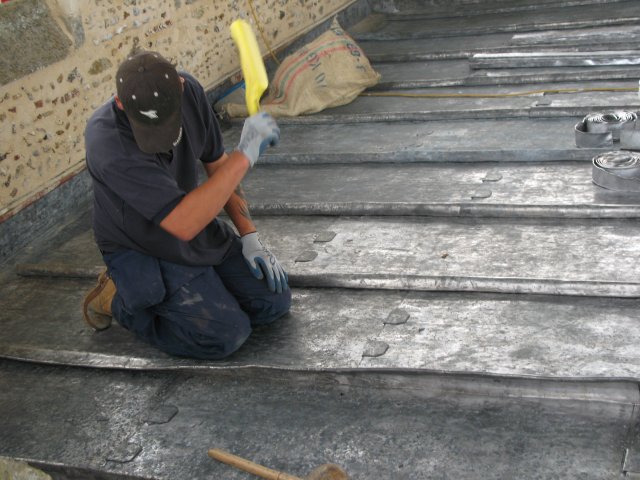

The old lead from the
roof was taken away and re-cast. It was then
returned and replaced. Fitting the lead is a skilled
job. Here you see the joint between sheets being
bent over to seal the water out.
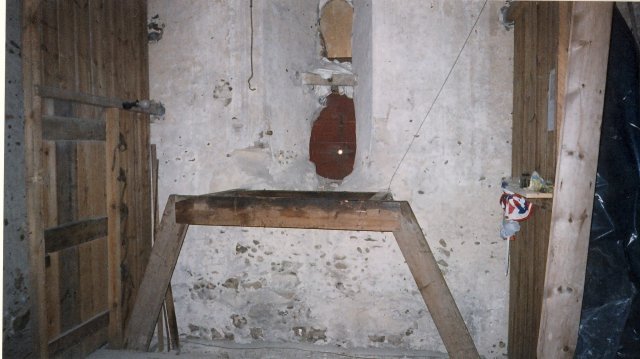

The clock was
bought second hand about 150 years ago. This
photograph shows the place where the clock
mechanism is fitted. The red part is the back of
the face with the hole for the hands clearly
visible. Above it is a hole which allows light
into the clock cupboard. It has been suggested
that this hole would be ideal for a cuckoo, a
view not shared by the church wardens. The clock
mechanism was away in Norwich for repair.
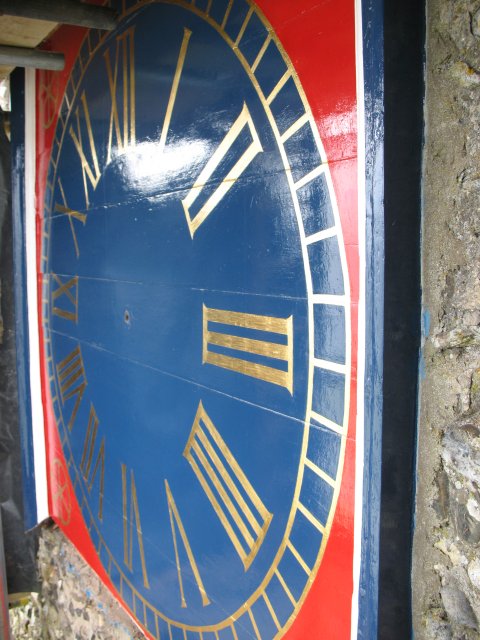

the clock face
has been re-painted and re-gilded in it's
original colours. The panel is made of wood.
The wheel designs in the corner reflect the
fact that St Catherine was martyred on a
wheel.
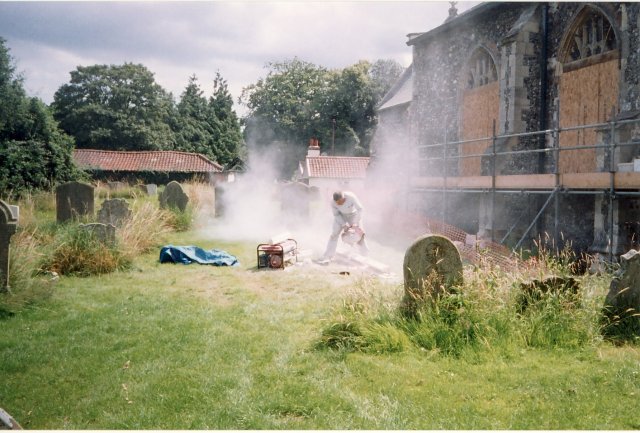

The stone
work in the side window mullions was
very badly decayed. Perhaps a legacy of
a previous repair. Here we see the stone
mason cutting the outside of each
mullion away. He then glued new stone to
the old mullion to produce a brand new
support for the glass.
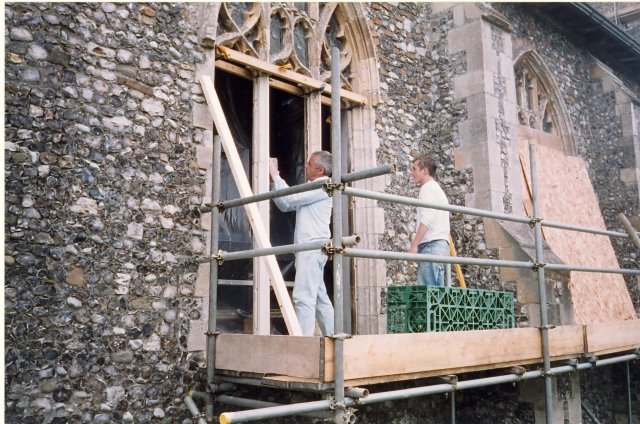
The restored mullions are
replaced.
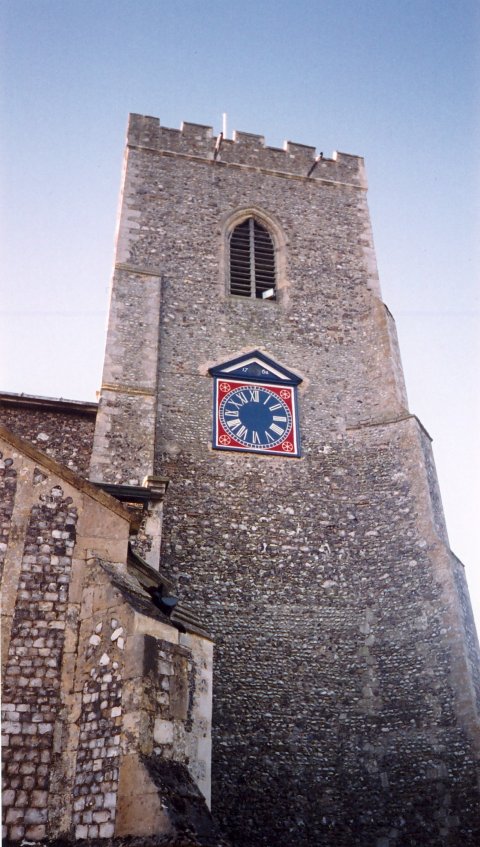
 The glass was sent to Norwich to be cleaned and fitted back into new lead. Each panel is fitted to the glazing bars with copper wires. |
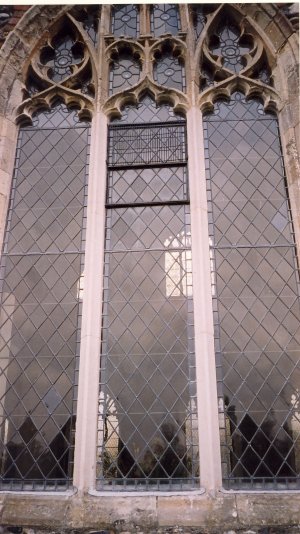 The completed window. The stone work still looks a bit new, but it will soon weather and blend in. |

The finished result.
Well almost. You will notice that the clock has no
hands. This is because we still had to raise
£4000 to have the clock mechanism overhauled
and put back.
However, in 2008, the money was indeed raised and the clock hands were put back completing the job for now.
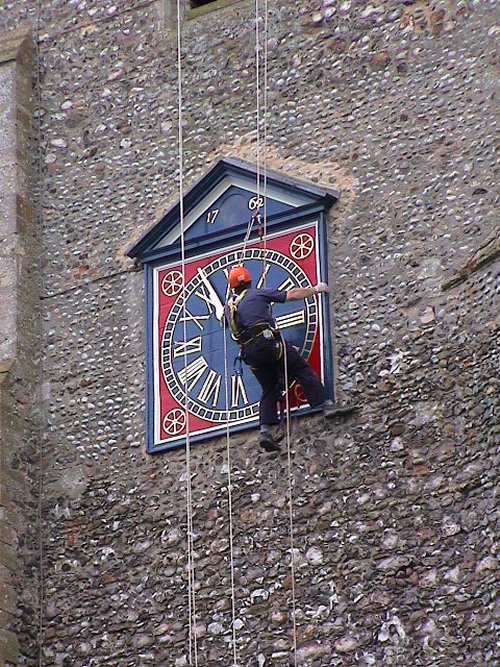
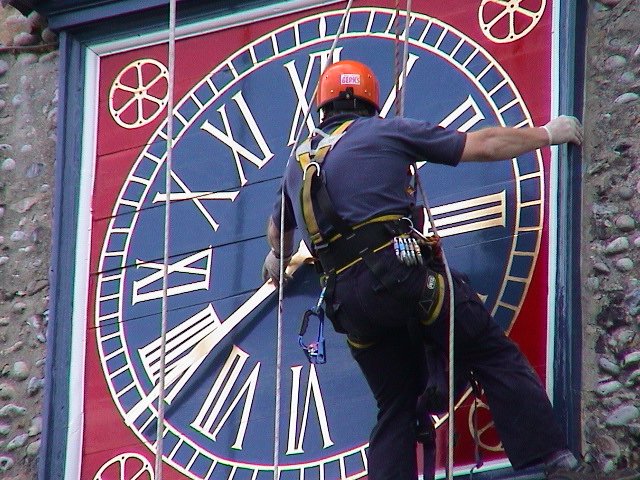
There is still a lot more work to do. If you would like to make a contribution to help restore this fantastic old church, then you can send it to:
Ken Grapes
The Limes, Norwich Road,
Ludham
NR29 5QA
Cheques payable to St Catherine's Church PCC.
Don't forget, St Catherine's is open every day for visitors. Come and see the work for yourself.
However, in 2008, the money was indeed raised and the clock hands were put back completing the job for now.


Here is the clock
mechanism, restored and back in place.


There is still a lot more work to do. If you would like to make a contribution to help restore this fantastic old church, then you can send it to:
Ken Grapes
The Limes, Norwich Road,
Ludham
NR29 5QA
Cheques payable to St Catherine's Church PCC.
Don't forget, St Catherine's is open every day for visitors. Come and see the work for yourself.
